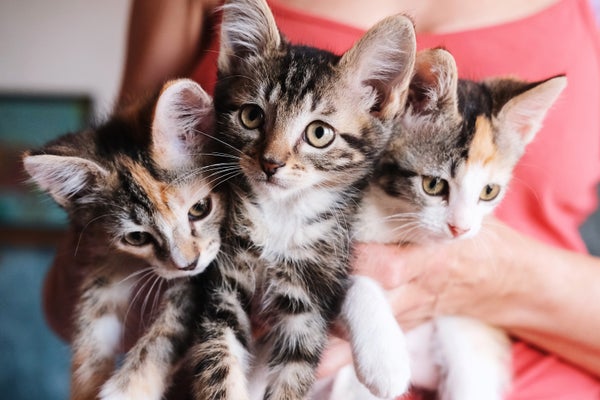Kitten Season Is Out of Control. Are Warmer Winters to Blame?
The summer “kitten season” is starting earlier and lasting longer, which is bad news for both animal shelters and wildlife
Rescue kittens in an animal shelter.
Mariia Zotova/Getty Images
It’s almost that magical time of year that the Humane Society of America likens to a “natural disaster.” Kitten season.
“The level of emotions for months on end is so draining,” said Ann Dunn, director of Oakland Animal Services, a city-run shelter in the San Francisco Bay Area. “And every year we just know it’s going to get harder.”
Across the United States, summer is the height of “kitten season,” typically defined as the warm-weather months between spring and fall during which a cat becomes most fertile. For over a decade, animal shelters across the country have noted kitten season starting earlier and lasting longer. Some experts say the effects of climate change, such as milder winters and an earlier start to spring, may be to blame for the uptick in feline birth rates.
On supporting science journalism
If you’re enjoying this article, consider supporting our award-winning journalism by subscribing. By purchasing a subscription you are helping to ensure the future of impactful stories about the discoveries and ideas shaping our world today.
This past February, Dunn’s shelter held a clinic for spaying and neutering outdoor cats. Although kitten season in Northern California doesn’t typically kick off until May, organizers found that over half of the female cats were already pregnant. “It’s terrifying,” Dunn said. “It just keeps getting earlier and going later.”
Cats reproduce when females begin estrus, more commonly known as “going into heat,” during which hormones and behavior changes signal she’s ready to mate. Cats can go into heat several times a year, with each cycle lasting up to two weeks. But births typically go up between the months of April…
Read the full article here







